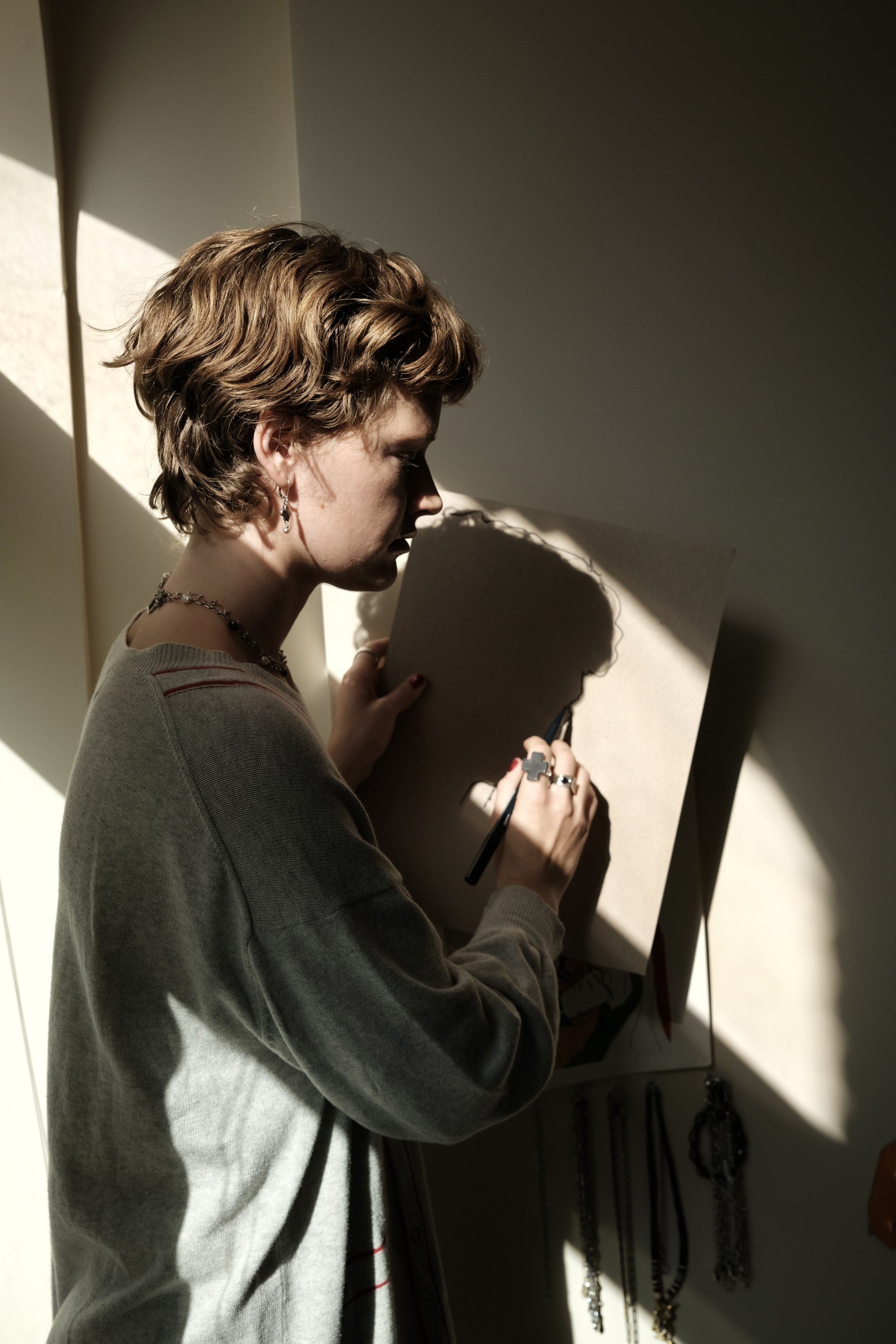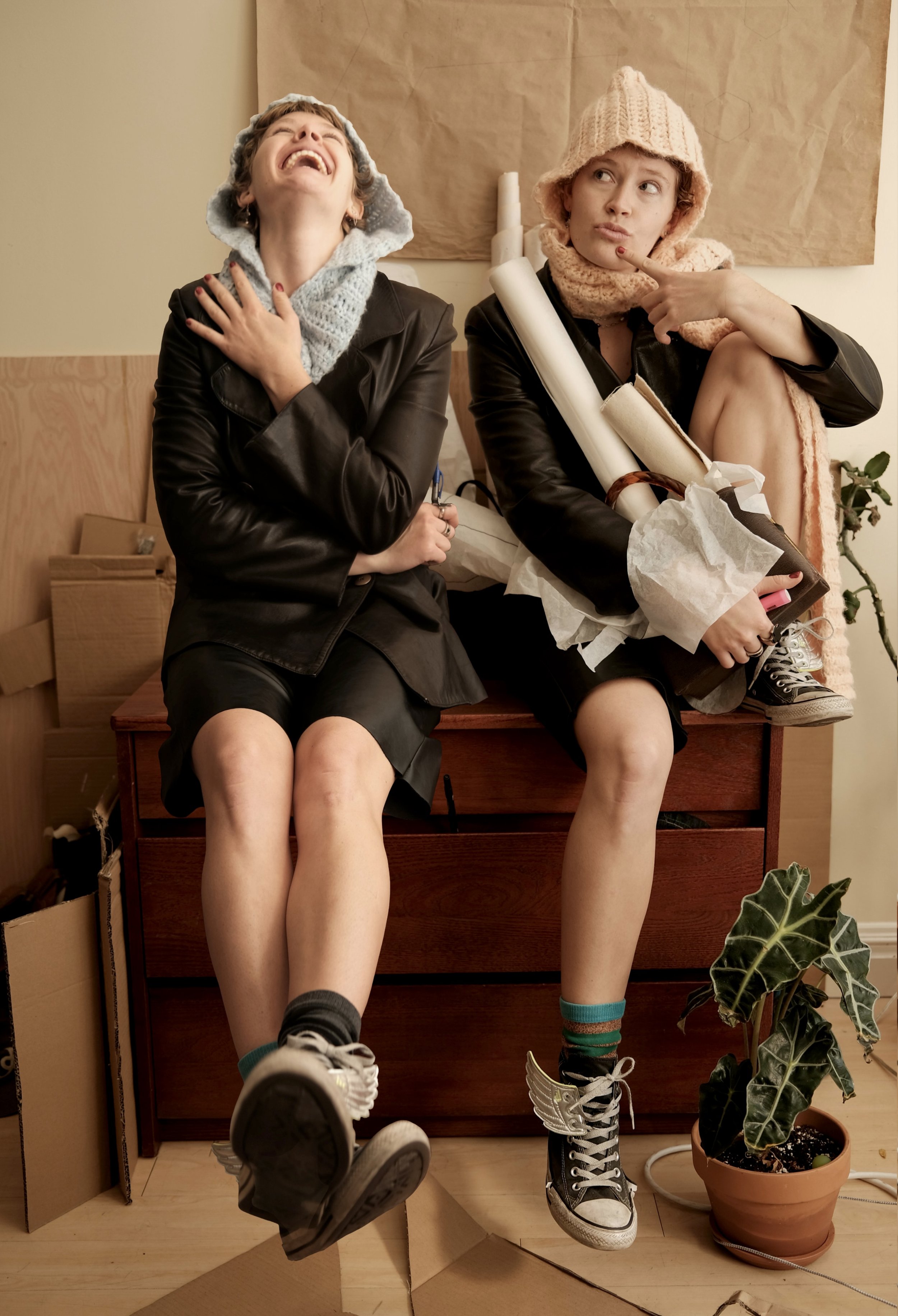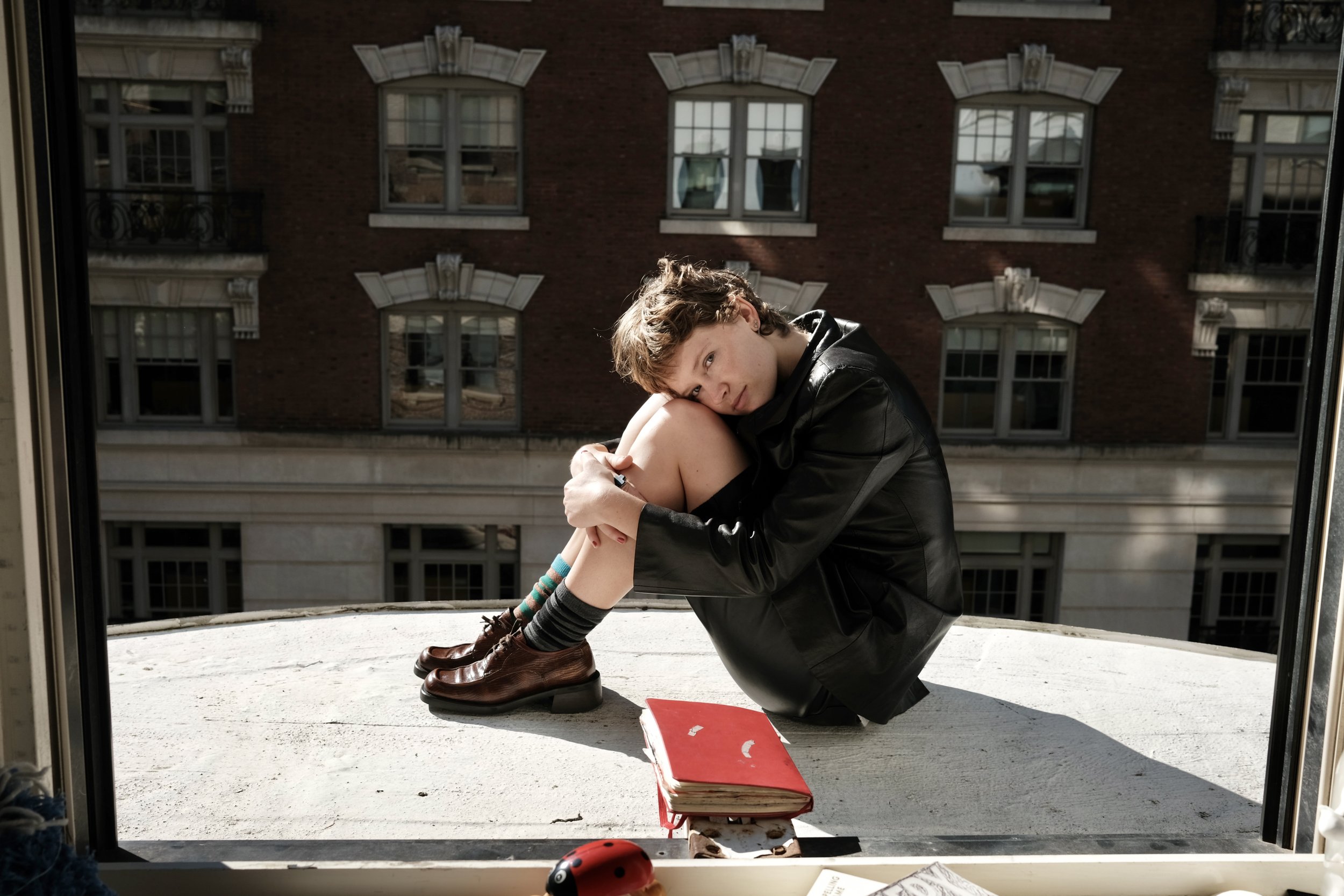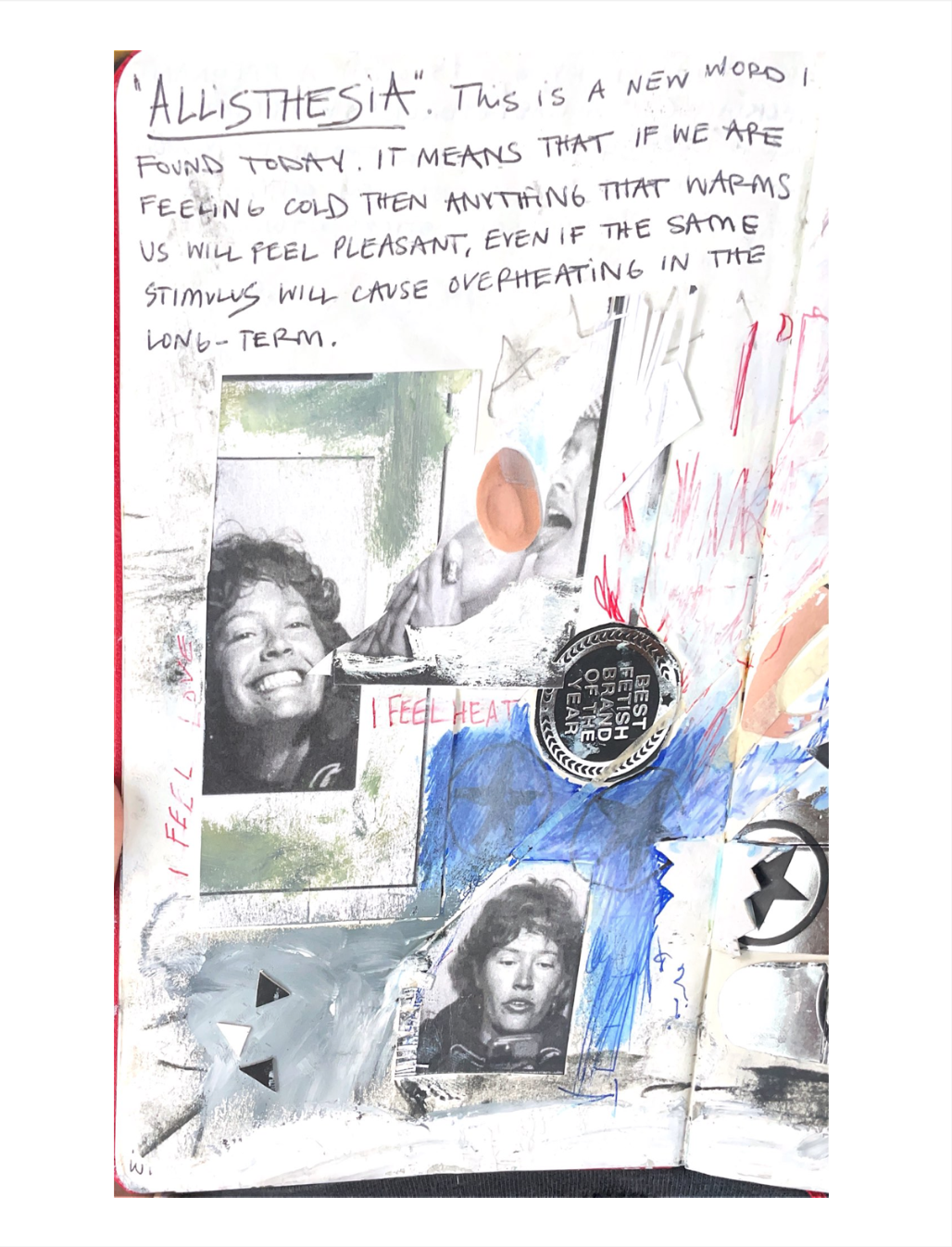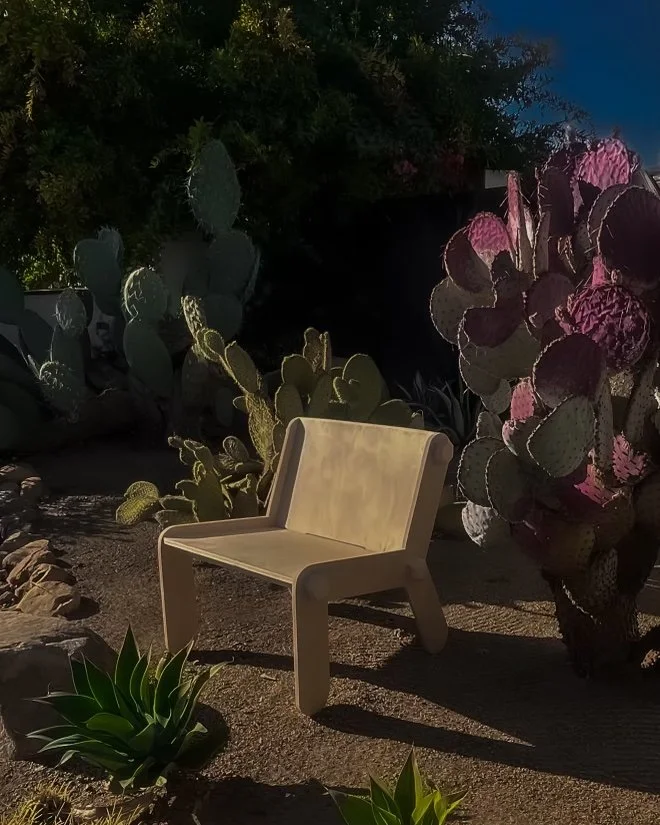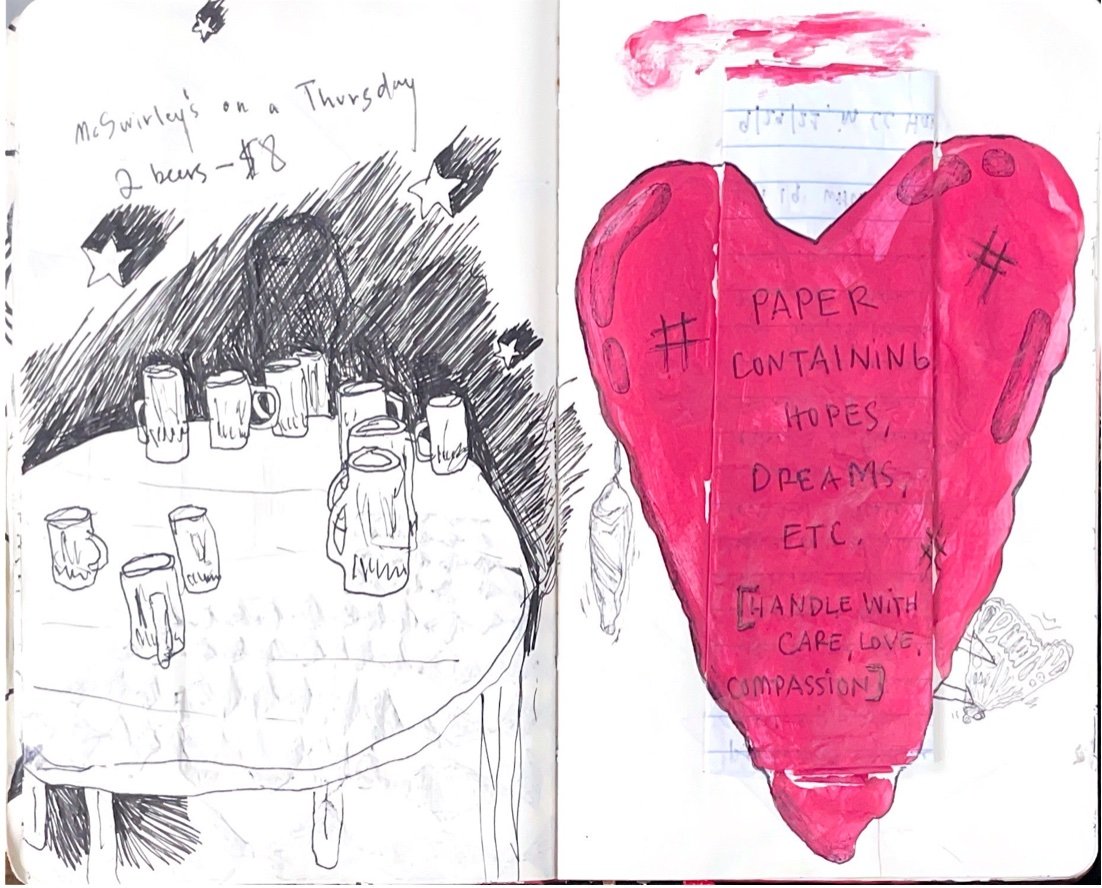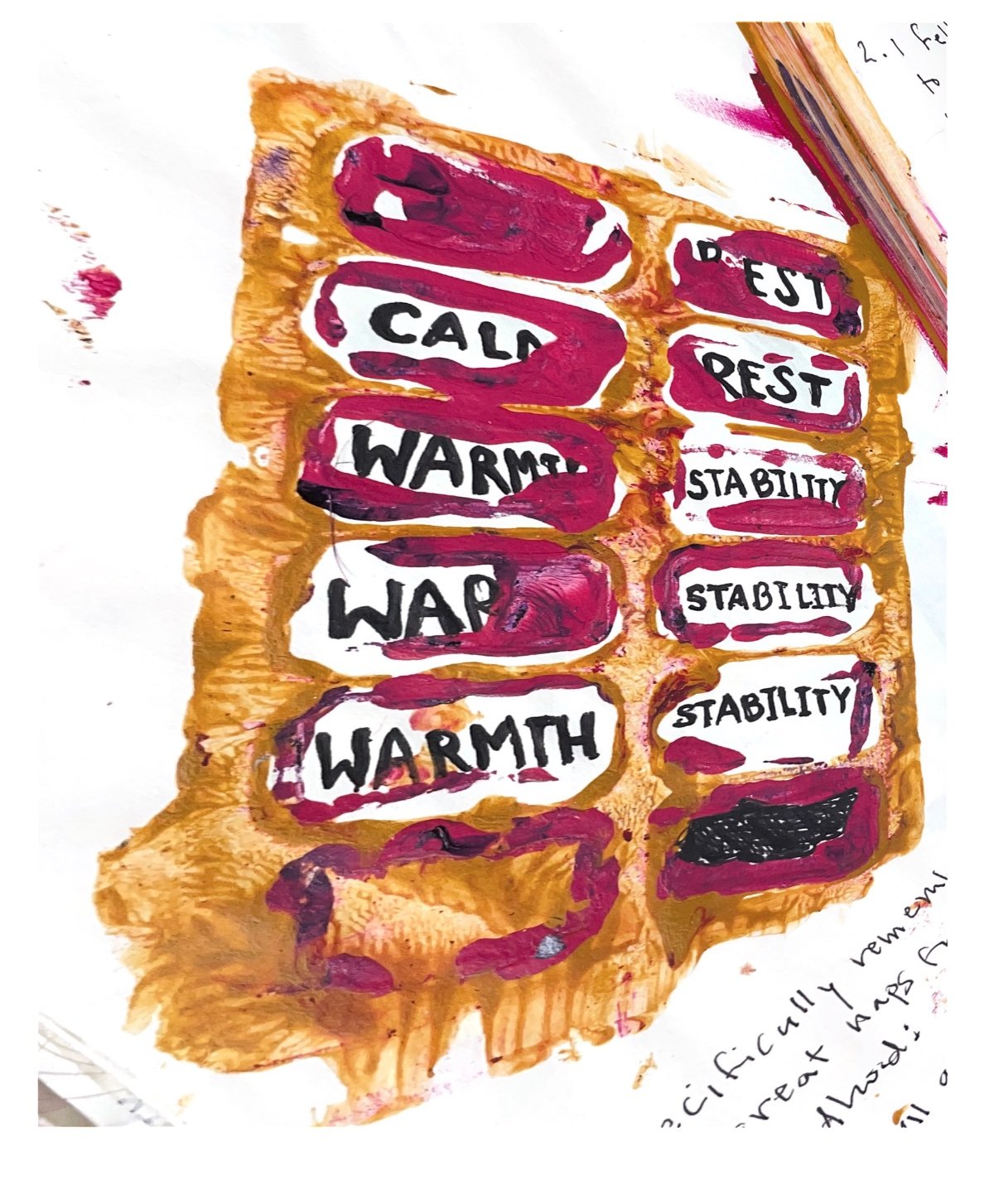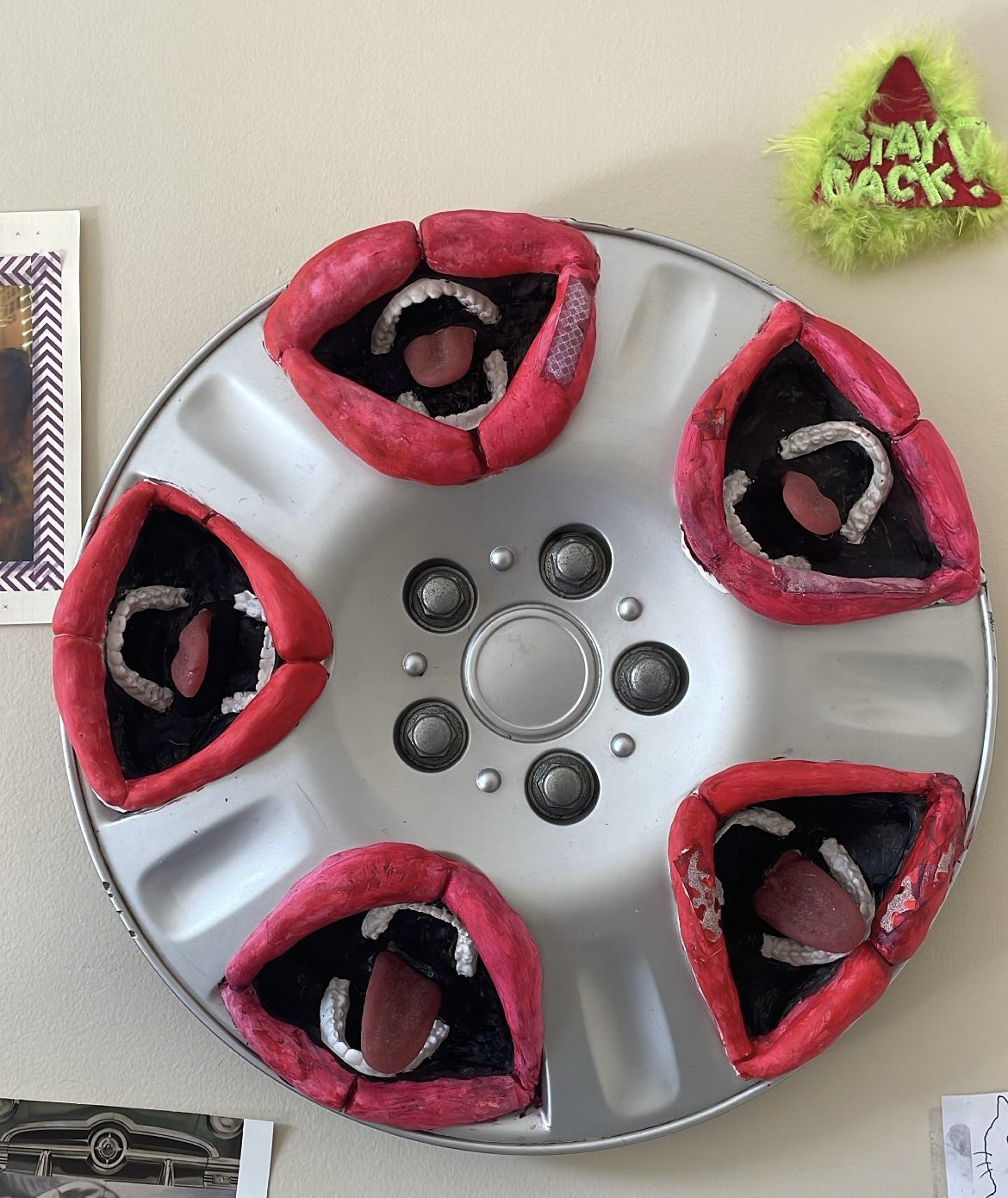Feature by Susana Crane Ruge
Photos by Sungyoon Lim
Ava, a Senior at Columbia College majoring in architecture, brings a touch of nostalgia to her creative endeavors. Hailing from Los Angeles, Ava channels her artistic pursuits through the mediums of scrapbooking and sculpture, as well as experimenting and reimagining various uses of materials. Ava has a knack for creating pieces that strike a fine balance between profound familiarity and intimacy, all while maintaining a strong sense of design and a high level of craftsmanship. During our conversation, Ava told me about her relationship with art and design, her plans for the future, as well as her creative process and the foundational principles that guide her projects.
I was 10 minutes late to Ava’s room in one of the Special Interest Community (SIC) buildings. She arrived downstairs, saying goodbye to a friend she was with before greeting me excitedly. Her friend jokingly said “Agh, thanks Ava for letting me interview you for my magazine”, to which I nervously giggled and they comfortably laughed. We introduced ourselves, said bye to her friend, and went up to the fifth floor. On the elevator ride up, Ava and I immediately began to talk about a range of topics starting with the fact that her SIC is the first visual artist community on campus, and that this was its inaugural year. As we approached her room, our conversation flowed effortlessly, casually getting to know each other while reacting giddily when we had something in common, such as our interest in architecture, both being middle children, and our shared love for her room’s delightful feature – the window that floods her space, adorned with her bike and various knickknacks, in natural sunlight. Our conversation began to flow over to her history and relationship with architecture. At this point, I had to interrupt our conversation to start recording on my phone, almost forgetting the reason that I was there, for this interview.
Ava started telling me about her journey with architecture and her college experience. Initially, she wasn’t sure about what she wanted to do. Once she realized all the classes she thought were cool were related to architecture, she realized that was what she wanted to focus on. Her origins as an artist and architect are muddled yet incredibly distinct. Having grown up in Los Angeles, Ava was exposed to a world of creativity, with her parents instilling in her an interest in creativity and design. Her mother, for one, was involved in the costume design industry and crafts jewelry. Moreover, Ava’s mom possesses the unique ability to create very intentional and aesthetically pleasing spaces, instilling in Ava an eye for finding value in found objects. She fondly recounted her childhood memories of trailing behind her mom as a kid:
“As a little kid, I would follow her around and pick up little scraps along the way. She's a very fast walker, so when I say follow her around, I literally mean trailing behind her. We really liked thrift stores and bead shops- the wholesale bead shop in downtown LA. I remember all the people who worked there and would give me little baggies of beads and other materials that they didn't really need anymore. They were all these weird things that should have been thrown out like dead bugs, or broken plastic from a hanger. I would take those and add them to my collection of things.”
While Ava told me stories from her childhood, I imagined a messy-haired blonde girl running behind her mom. A younger Ava, her attention easily swayed by objects that caught her eye, didn’t mind that her curiosity often meant that her mom would quickly walk away. This attention to detail and, more specifically, appreciation of things that are seemingly meaningless, is what Ava learned from her mother. It wasn’t just her mom, however, who shaped Ava’s creative journey. Her dad also had a huge effect on Ava as an artist and creative. Sharing a room her whole life, for a while with her younger brother, Ava decided to take matters into her own hands At the age of 10, Ava built a loft in her room, completely transforming the space she was forced, grudgingly, to share. She saw, for the first time, how design can alter spaces, and how she can play around with the environments around her. During her story, I began to wonder how physically she built a loft, being that she was only 10 years old. That’s where her father comes into the picture. Ava, with her natural inclination towards sketching, collaborated with her dad, and they built the loft together.
Ava mentioned The Pocket Universal Principles of Design, a source of inspiration that deepened her understanding of space and its profound effects on the human experience. To me, she seemed like someone who actively engages with the media she consumes, thinking about everything she reads, watches, and listens to, in a way that makes sense for herself. It was really refreshing to hear. This innate curiosity and the stimulation she finds in theory and literature serve as a source of inspiration, motivating her to apply what she learns independently to her designs..
This relation between reading and art caught my attention, so I asked Ava about other books that have been significant for her.
“This is a little book, very serendipitous. My friends visited me in Copenhagen last semester, and they brought me this book they picked on impulse because the cover reminded them of me. I read it and found that everything about it struck a chord with me. The author, Legacy Russel, coined the term Glitch Feminism, and it refers to people who disidentify from the social norms, where you’re queer, a woman, a person of color, neurodivergent, all of these categories fall into a glitch. She turns a glitch, a negative thing in the coding world, into a space you can rip open and build a world within that space. The language she used was so spatial, and I was really drawn to that, so I took what she said quite literally and decided to try to apply it to architecture and design. I try to collect things that are discarded, that are glitches, like furniture or old tires, and put it to use and give it meaning. Most of what I do is trying to make a world in glitch design, especially for women and queer people.
Ava told me about her perspective as a queer person in the world of design and architecture, as well as highlighting the lack of representation or the mere acknowledgement of the existence of queer people within the field. With her awareness of the diversity in architectural practices around the world, Ava found it intriguing that despite the omnipresence of queer people, their presence remained largely invisible and understood as a minority.
“It’s interesting that there hasn't been a queer architecture that's been established yet. So tying it into this idea of archive, I think it's really interesting to build a critical mass of glitch artifacts to see if there's some underlying theme. I want to see what it looks like to have queer designs and glitch designs in one place,” said Ava.
This really resonated with me. We delved further into our shared opinions on design and architecture as areas that are meticulously planned yet often thoughtlessly overlook diverse identities. Ava pointed out the stark insensitivity in fields such as car design, and how its practices do not take into account diversity of body types or female anatomy. Ava is truly passionate about how design, space, experience, and identity can be understood together – which I really enjoyed thinking about – so I asked her to tell me more about how her identity finds expression in her work. She patiently showed me many of her pieces that lie around her room. From remnants of past assignments she had a special liking for, to plans and plywood of the chair she designed during her study abroad in Copenhagen, her scrapbooks, a pair of black heels she transformed by gluing hair to them, to a stoplight sculpture she created by tufting thread through a metal grid, and even a surrealist tire rim with air-dried clay filling the holes, each project embodied her identity as an artist and designer. Her pieces, in my eyes, exemplify the essence of glitch design that captivates her artistic process – an amalgamation of chaos and freedom that defies conventional norms of art and design.
While I was looking at all her pieces, I asked Ava about how she makes art for herself versus making art for others, especially considering the intimate nature of scrapbooking. I was curious about the complexities artists face when sharing such vulnerabilities. Ava shared how she did not think of herself as an artist in the past. As a result, everything she created was inherently personal, she would be perfectly content with it being private, with each piece emerging spontaneously, driven by raw emotion. She told me how she sees art as a repository of feelings and memories. For Ava, scrapbooking, and transforming her emotions into tangible pieces of art, imbues her feelings with significance and validates their existence in the physical world. In a way, scrapbooking is Ava’s way of attributing value to her emotions, and acknowledging their reality.
Ava began her design-focused Instagram account with the intention of creating a community around art and design. She is skeptical, however, about social media and digital archives, but has come to appreciate their value. Ava has found immense worth in using her new Instagram account to establish a centralized archive for her work. In her exploration of creating art for others, Ava has found it fascinating to see how people react and engage with her pieces. She enthusiastically described how engaging with her audience has been a huge source of genuine enjoyment. Ava gets to see her art from a new perspective, and can now concretely observe the impact it has on individuals by getting active input in her pieces, a dynamic exchange which Ava approaches with an open, curious, and nonjudgmental attitude.
As graduation approaches for Ava, her life is open to taking many different paths. Ava shared her plans, which include the possibility of graduate school abroad. She emphasized, however, the profound enrichment that she has derived from her time in New York, where she has had the ability of experiencing the vibrant art and design community. She contemplates the idea of staying in the city, but is also yearning to travel, a feeling she conceptualizes as a “travel bug”. Ava’s guiding principles appear to be the ongoing quest for spaces in which her creativity can flourish, which allows her to navigate her future with relative ease and can happen anywhere, so she doesn’t worry too much about where she will end up.
































